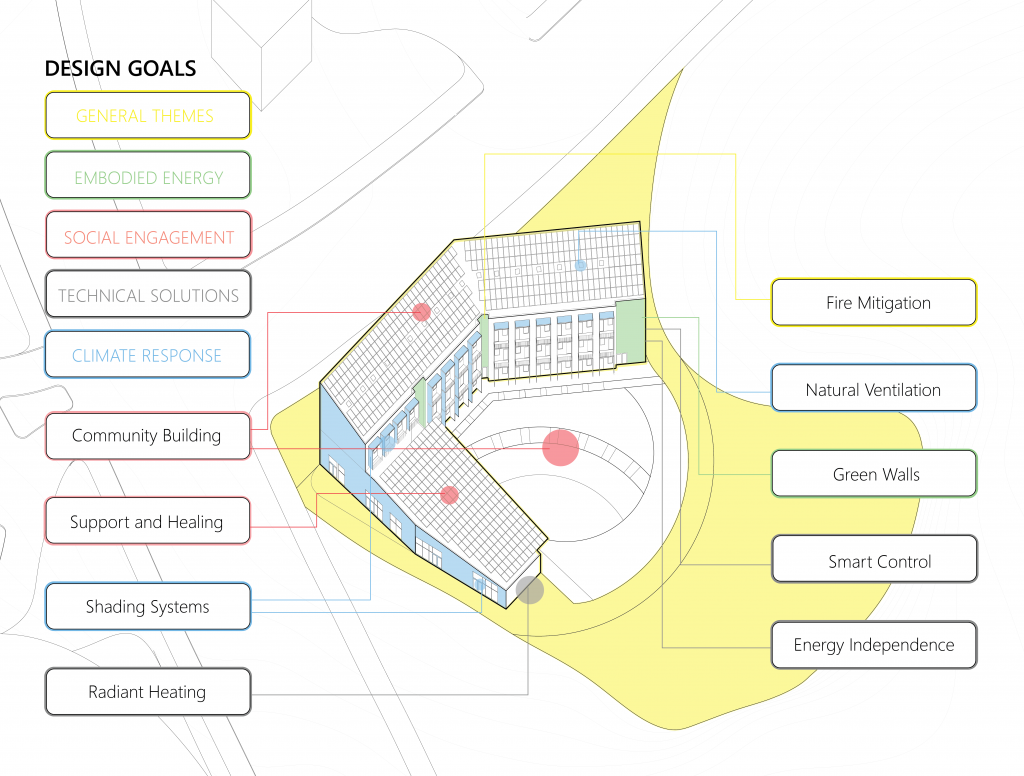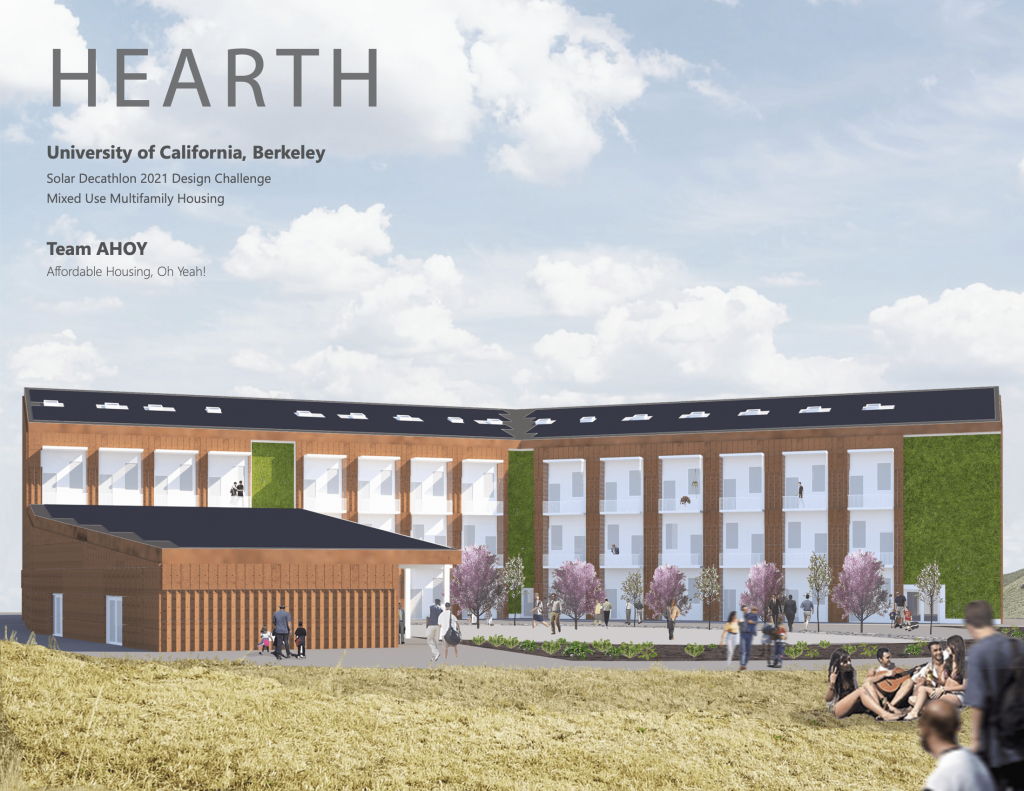Hybrid Equitable and Resilient Transitional Home (HEARTH)
Introduction
As climate change and housing inequality compound each other’s effects, there lies a pressing need for us to design a built environment that combats both of these issues to ensure a sustainable future.
HEARTH exists precisely at this intersection as a Hybrid Equitable and Resilient Transitional Home.
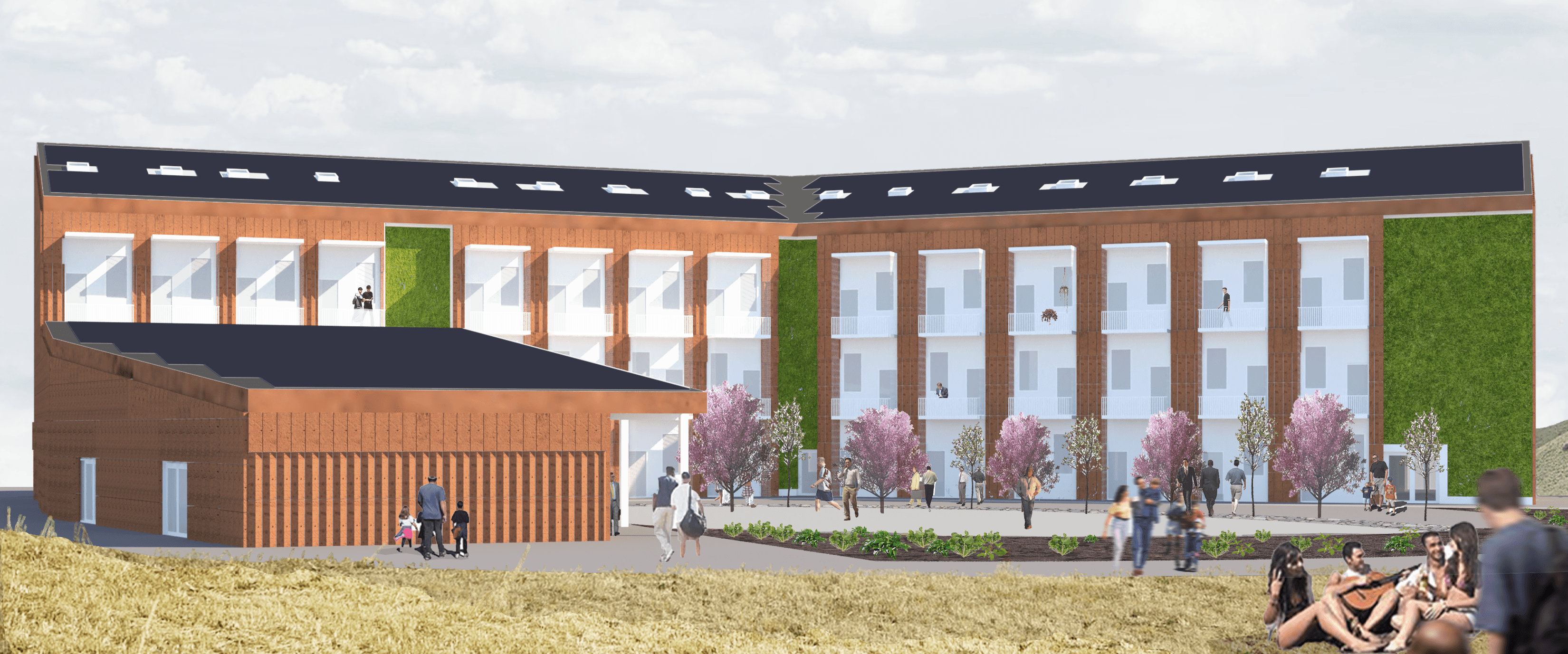
Design Strategy
The City of Santa Rosa has been engaged in a recovery effort following two deadly wildfires in recent years, and the homelessness crisis in the Bay Area ranks among the worst in the United States by virtually every measure. Yet despite the manifold efforts of local governments, companies, and nonprofits to address the issue, the number of homeless individuals continues to grow. In addition to policies that prevent housing instability in the first place, there is a pressing need to rethink how communities can be built to support these disadvantaged populations while considering economic and ecological constraints.
HEARTH’s design is a framework and model for implementing a hybrid long-term supportive housing for the homeless and permanent housing for low-income peoples in the City of Santa Rosa. The building provides a holistic solution that provides people experiencing homelessness with the means to achieve economic stability in a socially conscious and easily reproducible manner in addition to providing affordable units for low-income residents, informed by communication with social workers along with a prudent political praxis and the latest engineering techniques.
Fostering Resilience
HEARTH provides both ecological and community resilience.
HEARTH’s defensible landscaping, firewalls, and building compartmentalization protect the whole site from fire. By implementing an all electric design with onsite PV and battery storage, HEARTH aims to protect its residents from the threats that our legacy grid poses and work towards a more efficient, resilient, stable, and sustainable grid.
As a transitional housing center, HEARTH bridges the gap from homelessness to permanent housing. Helping the most at-risk populations stay housed creates a community that can withstand unexpected shocks such as natural disasters and economic downturns. Housing instability is a highly nonlinear process, which necessitates continuous and comprehensive support. HEARTH’s dedicated counseling spaces help facilitate these programs, and partnerships with local service providers are essential to providing residents with an array of convenient, high-quality programs.
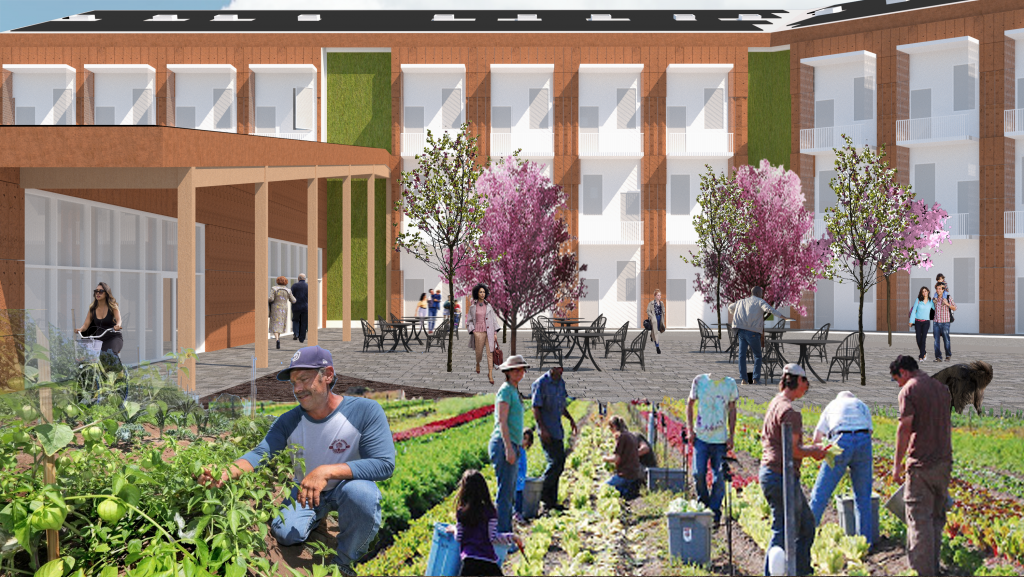
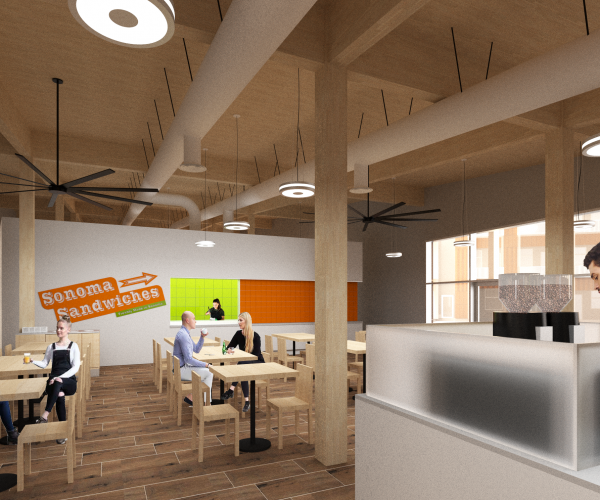
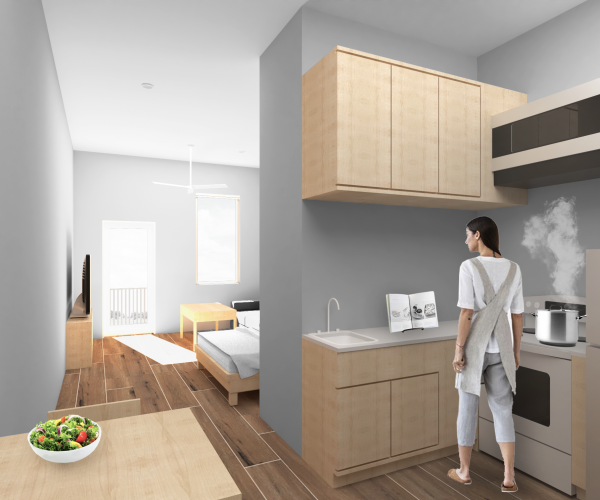
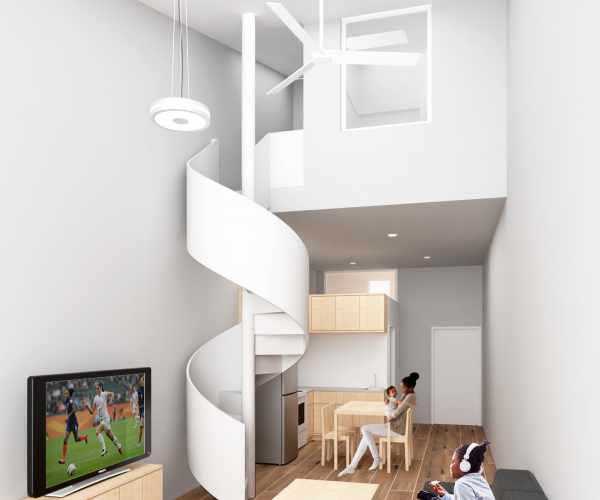
Check out our final deliverable here:
Sustainable Housing at Cal © 2022

